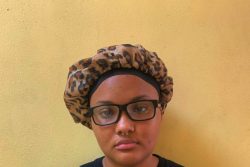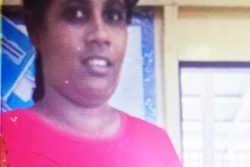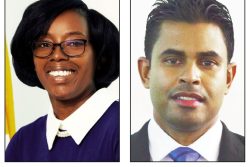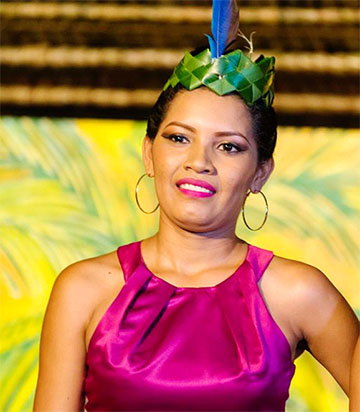 What is the Commonwealth? This is not a question that will arise very often, or that one might have cause to think about too much. While it might quite rarely trouble one’s individual consciousness and there are those who consider the Commonwealth little more than a fairly innocuous world political body, it occasionally becomes relevant and remains an important world group of nations.
What is the Commonwealth? This is not a question that will arise very often, or that one might have cause to think about too much. While it might quite rarely trouble one’s individual consciousness and there are those who consider the Commonwealth little more than a fairly innocuous world political body, it occasionally becomes relevant and remains an important world group of nations.
But what is the Commonwealth? The answer might appear easy or simple until you suddenly find yourself needing to describe and explain it. Then you discover that it is not really so easy to pin it down, to properly define it and in one statement, accurately capture its essential qualities, its “infinite variety” (to borrow Shakespeare’s attempt to describe the indescribable Cleopatra, Queen of Egypt.
Okay, so what is it? In plain prose it is a group of independent nations forming an inter-governmental organisation made up of states that are former colonies or members of the British Empire. It is coordinated by a Commonwealth Secretariat located in London, was established by the British Parliament in 1931 and is headed by Queen Elizabeth. Alright, that was fairly painless until one asks – but what does it mean? Why does it exist at all? It might be difficult enough to answer those in plain prose, but what if you had to express it in art?
More than that, what if you imposed that task upon children aged 4 – 15? Daunting you might think, but the last time that happened the results were delightful, astonishing and thought provoking. British High Commissioner to Guyana Greg Quinn recently invited school children across Guyana to express in art, “What the Commonwealth means for me” and was sufficiently impressed by the outcome to say it showed “the abilities and creativity of children here in Guyana . . . I was blown away by the quality of their work”.
This was an inter-schools Children’s Art Competition launched in Guyana by the British High Commission in which the contestants were asked to produce a piece of art based on the theme. There were three age groups: 4 – 7, 8-11, and 12 – 15; the judging was completed, and prizes awarded to the winners at the High Commissioner’s residence a week ago. It was indeed very instructive what the contestants thought of the Commonwealth. Obviously, they were made to research it, but what was significant was the way they converted their findings into art. There was a variety of definitions of the Commonwealth of Nations which proved how difficult it is to pin it down in one description, but how rewarding it is to use the visual arts to express its “infinite variety”.
This was the second Children’s Art Competition hosted by High Commissioner Quinn. The first was in 2016 when the idea came up to mark Guyana’s 50th anniversary of Independence. The theme was relevant to the occasion with meaning for Guyana-UK relations in the context of the anniversary celebrations. The topic for the contest was ‘what the new Guyana-UK partnership meant’ to the contestants. The entries came from all corners of Guyana, as did the winners, and prizes were presented to winners from as far away as Lethem and Mabaruma.
Suitable inspiration for another competition did not present itself until 2018 when there was another meaningful reason to have it. The Commonwealth Heads of Government Meeting was hosted in London and that was good enough excuse. The meaning of Guyana’s independence and the partnerships that have developed with Great Britain over the years provided ideas and an opportunity to express them creatively in 2016. London hosting the summit created a bridge to reflection upon this partnership, extending to the greater partnerships in the Commonwealth with the UK as hosts. The possible ideas were multiple when the imagination was exercised around that theme.
It is interesting to reflect on the vast range of categories of meanings of the Commonwealth, its constituencies, its functions. The partnerships are endless, including developmental institutions such as the Association of Commonwealth Universities, providing the world, and particularly developing countries, with a university system and training opportunities. In fields of culture and literature, a platform was created for the very important post-colonial theories and orientalism as one may take a constructive post-colonial approach to the Commonwealth.
The 2018 Commonwealth Games recently held in Australia was another institution – one of the large international sporting events on the world calendar that would have been in the news and held attention. But there are several other significant factors. Many of them were incorporated into the better pieces of art that came out of the competition and won prizes. References were made to them in the works or they were sufficiently reflected to cause the audience looking at the art to think about them.
While it is not known what guidelines were given to the schools, there was a certain unifying similarity in the forms used by the contestants. The works were not paintings. They might be drawings in a sense but were more dominantly multi or mixed media – mostly collages including images cut out and pasted together. But there were drawings, sketches and colouring.
The most impressive winner was moved by several significant facts about what the Commonwealth means and what is represented by its 53 member countries. Even though not all these facts were in the picture, most were, and the collective provoked thought of several others. For example, all the winners reproduced the flags of the Commonwealth nations, some simply listing them, others, like this most impressive winner, utilising them imaginatively. It incorporated through actual naming or caused reflection of amazing facts.
The Commonwealth practically covers the world. Member countries exist on every continent and in every region of the globe – Asia, Africa, Europe, North America, South America, even Australasia, Oceania and Central America. In some of these areas, representation is by a single nation like Guyana in South America, Canada in North America and Belize in Central America. There is the range of geographical varieties and features from rainforests to desert, as well as the extremes of cultures.
This picture provides startling information fitting into the artistic composition. Within the Commonwealth, it depicts the smallest republic, the driest country, the most pristine forests, the reserves of Iwokrama, the highest single drop waterfall. There are extreme contrasts in economy, geography, culture, climates and demography.
The next most impressive art work was the one that said, “The Commonwealth Has No Place for Dictatorships”. It drew attention to democracy as a principle in the Commonwealth and a reminder that dictatorships, totalitarianism and despotism are not (at least officially) tolerated. The pictorial images here show cartoon-like portraits of typical despots and military strongmen with very recognisable pictures of known types, if not individuals. Perhaps by diplomatic choice, no country or no dictatorial leader is named or clearly identified, although there are those that spring to mind.
There was another in which the Commonwealth was “Spreading Her Wings”. Again, this brought to mind the vast ranges suggested in the winning work, and the variety of and contrasting features to be found across the member countries. But this was much simpler and less complex, depicting a peacock with its characteristic large, spreading, spectacular tail, whose feathers were the flags of the nations.
Yet another focused on cultural variety and traditional uniqueness, with pictures of persons in national traditional costuming. The Commonwealth is emphatically multi-cultural and multi-ethnic.
The winners were: 12 – 15 Age Group: First Place – Aaron Gangadeen (Line Path Secondary) and Andrs Adams (Lodge Secondary); Second Place – Javier Fraser (School of the Nations); Third Place – Tia Bandoo (School of the Nations); Highly Recommended – Richard Baldeo (Lusignan Good Hope Learning Centre) and Toshan Singh (Lusignan Good Hope Learning Centre).
In the 8 – 11 Age Group: First Place – Hayden O’Brien (School of the Nations); Second Place – Kayla Bradshaw (School of the Nations); Third Place – Tanuja Sahadeo (Lusignan Good Hope Learning Centre); Highly Recommended – Adia Alphonso (New Guyana School) and Siddharth Ramessar (Ermsville Primary).
In the 4 – 7 Age Group: First Place – Candrouti Ram (Lusignan Good Hope Learning Centre).










